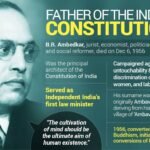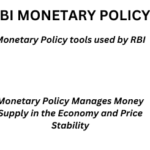CONSTITUTION DAY 2018

Constitution Day is celebrated on November 26 every year to mark the day on which the Indian Constitution was adopted by the Constituent Assembly.The Narendra Modi-led government declared November 26 to be observed as Constitution Day on November 19, 2015.
The Constituent Assembly met for its first session on December 9, 1946. Over the course of the next two years, the committee took important decisions regarding the objectives, principles and other aspects of the Constitution. It was finally adopted on November 26, 1949, and came into effect two months later on January 26, 1950, which is celebrated as Republic Day.
- Its first meeting was held on 9th December 1946,with Sachidanand Sinha as its interim President;
- On 11 December 1946, Dr. Rajendra Prasad was elected as the President of the Constitution Assembly;
- The historic ‘Objective Resolution’ was moved in the Constitution Assembly by Jawahar Lal Nehru on 13th December 1946;
- Shri B.N Rau was appointed as the Legal Advisor of the Constitution Assembly;
- Constitution Assembly formed 13 important committes for framing the constitution.
- The Drafting Committee of the Constitution was headed by B R Ambedkar who is often referred to as the ‘architect of the Indian Constitution’.It took two years, 11 months and 17 days to accomplish the stupendous task of drafting the Indian Constitution;
- It is considered to be the lenghtiest Constitution in the world.Originally it had 22 parts,395 Articles and 8 Schedules;
- Union Powers Committee was headed by Jawahar Lal Nehru;
- Provincial Constitution Committee was headed by Sardar Patel;
- Committee on Fundamental Rights and Minorities was chaired by Sardar Patel;
Provisions of the Constitution and their Source
USA Constitution : Judicial Review
USA Constitution : Independence of Judiciary
USA Constitution :President as the executive head
USA Constitution :President as the Supreme Commander of the Armed Forces
USA Constitution :Fundamental Rights
USA Constitution :Preamble
USA Constitution :Removal of Supreme Court and High Court Judges
UK Constitution:Rule of Law
UK Constitution:Law Making Procedure
UK Constitutional:System of single citizenship
UK Constitution:Parliamentary system with ministerial responsibility
Canadian Constitution:Federation with a strong centre
Canadian Constitution:Distribution of powers between the Union and the States
Irish Constitution:Directive Principles
Irish Constitution:Method of election of the President
Irish Constitution:Nomination of members of Rajya Sabha by the President
Weimar Constitution:Emergency and its effect on the Fundamental Rights
Australian Constitution:The Concurrent List
Australian Constitution:Provision regarding trade,commerce and intercourse
South African Constitution:Constitutional Amendments
Japanese Constitution;Fundamental Duties
French Constitution:Republic






0 Comments